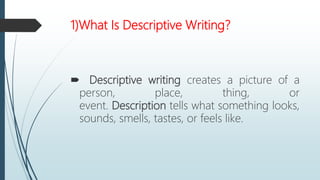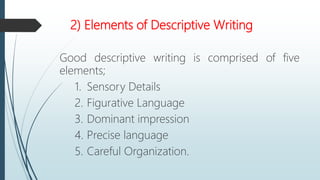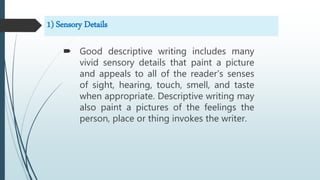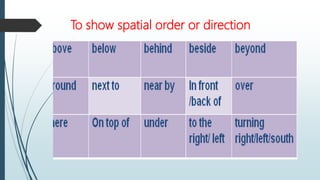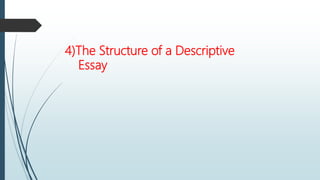This document provides an overview of descriptive writing. It discusses five key elements of descriptive writing: sensory details, figurative language, dominant impression, precise language, and careful organization. Sensory details use vivid language to appeal to the reader's senses. Figurative language like similes and metaphors help paint a picture. The dominant impression gives the reader an overall sense of the subject. Precise language uses specific words. Careful organization structures the description chronologically, spatially, or by order of importance. Transition words can signal descriptions of place, time, or importance. The structure of a descriptive essay incorporates these elements.

